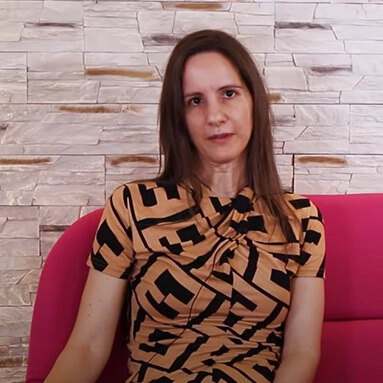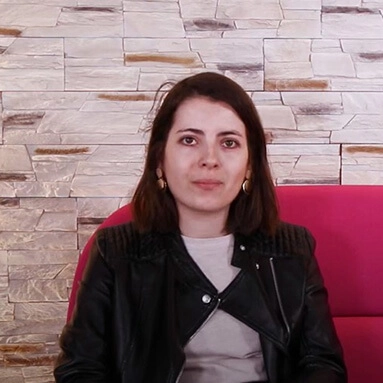How is it made?
- An X-ray is taken of the initial condition. This provides information about the extent of the inflammation, the anatomical features of the tooth, and the expected number of root canals. (Generally, for front teeth, there is 1 canal, for premolars, 1-2 canals, and for molars, 3-4 canals.)
- We use careful and painless local anesthesia.
- We remove the decay from the crown of the tooth and open the "inner part" of the tooth (the pulp chamber, which contains the blood vessels and nerves supplying the tooth). This is called trepanation.
- After locating the canals, we clean them painlessly and quickly using modern hand and machine root canal instruments, shaping them to the appropriate form.
- Cleaning (with rinsing fluids) and drying follow.
- Then we use our "superweapon," the laser!
- Unfortunately, even with the most careful work and the best tools and materials, it can sometimes happen (due to anatomical conditions) that not every single bacteria can be perfectly cleaned and removed. As a result, the root canal treatment may fail in the short or long term. However, thanks to the laser, the pathogens can be perfectly destroyed, so there is nothing to cause inflammation. The laser seals the dentinal tubules – those small channels through which the tooth could become reinfected – and stimulates the bone-producing cells in the bone surrounding the root to initiate new bone formation. This makes the treatment of inflammation around the root (granuloma, cyst) highly successful! And all of this without pain, as you won't feel anything from this.
Detailed information about laser root canal sterilization
Thanks to the above, often the final root filling can be done during the first treatment session, avoiding the old and still commonly used routine of having to visit the dentist daily or weekly for treatment, with the root filling being completed after several months. In this fast-paced world, you likely don’t have the time or capacity for this, do you? If the canal is heavily infected, we will not immediately place a permanent root filling despite the use of a laser, but only a temporary disinfectant medicated filling. Then, during the next appointment (1-2 weeks later), the final root filling can most likely be done. A temporary filling is placed in the coronal part of the tooth. (We must wait for the root filling to set, which is why immediate final restoration is not possible.) On the last visit, we restore the coronal part of the tooth, usually with an aesthetic filling material. (Over time, root-treated teeth become weak and brittle, which is why we recommend capping the tooth with a crown to prevent common fractures. These fractures can sometimes be so severe that the tooth becomes irreparable. After hard and lengthy work to save the tooth, we wouldn’t want to lose it due to an unfortunate fracture.) Since success depends heavily on knowing and precisely following the correct root canal length, multiple X-rays during the process are necessary. This is done with modern, non-invasive techniques that do not cause discomfort. with an electric canal length measurement device can also be replaced, so root canal treatment for pregnant women can also be safely performed,, without the risk of X-ray exposure! It is important to note that the equipment we use... digital X-ray equipment the amount of radiation emitted is very low, so the X-rays taken during root canal treatment do not have harmful effects on health. To further reduce this minimal radiation exposure, we use a so-called lead apron and a collar to protect our dear patients.
Advantages and disadvantages:
Isn't this procedure as dreadful as it seems? The painlessness, speed, and precision are guaranteed throughout, though multiple sessions should be expected. However, perseverance pays off, as it can save the tooth, which would otherwise be doomed, potentially for a lifetime!
Alternative:
The only other option is tooth extraction. While this may seem like an easier and cheaper solution in the short term, it's always worth thinking ahead! The missing tooth must be replaced, as its neighboring teeth will shift (trying to fill the created gap), causing endless harmful consequences. And let's not forget, replacing a lost tooth always requires more time, energy, and financial investment than saving your own! We hope that this brief summary has highlighted the importance and urgency of root canal treatment, and soon, during a free personal consultation, we will have the opportunity to answer any further questions you may have!
Alternatives:
- Composite, ceramic, or gold cast fillings (inlay/onlay)
- Porcelain veneers, crowns (These are primarily recommended for large cavities.)
Inlay or cast filling (inlay, onlay, overlay)
A solution for decades. Haven't you often daydreamed about no longer having issues with your filled teeth? Are you tired of one of your old fillings always breaking, discoloring, or making your tooth sensitive underneath? Do you feel like it's an endless cycle happening in your mouth? Here is the solution! The dental inlay is the most perfect and durable solution among fillings! It fits every cavity, from small to gigantic! This is a type of filling made by a dental technician and fixed with adhesive.
In terms of material, the following options are available:
- Plastic (similar to composite fillings, but much more durable due to the technical work phase)
- Porcelain (ceramic)
- Gold (the most durable and perfect solution, but due to its yellow color, it is primarily used for molars)
- Gold-ceramic (the yellow color of gold is covered by tooth-colored ceramic, but since this is not possible on the entire surface, a thin gold edge remains on the filling)
- Zirconium (metal-free ceramic)
In English literature, it can be found under various names. Let's take a look at the differences!
The difference in names is only due to the size and extent of the inlay. In terms of properties and how they are made, they are the same.
Inlay:
A smaller inlay that does not reach the cusps.
Onlay:
A larger inlay that reaches the cusps.
Overlay:
A larger restoration that extends beyond the cusps.
After a brief introduction, let's see in which cases it is applicable/recommended.
- Instead of composite or amalgam fillings, if you're looking for a more durable and aesthetic solution.
- In cases of large and/or deep cavities, when plastic fillings cannot restore the tooth.
- It can also be suitable for anchoring bridges.
How is a root canal treatment performed?
- For larger cavities, it is advisable to request anesthesia. (The prices include the cost of anesthesia. You will hardly feel anything, just that it quickly becomes numb.)
- We remove the old filling and/or decay, and create a special cavity.
- Especially in the case of gold cast fillings, we create a special light-cured "insulating" layer, which has two purposes: firstly, it helps reduce your costs, as the price of the filling largely depends on the amount of gold used; secondly, it eliminates the metal's good heat conductivity, thus preventing your tooth from becoming sensitive to hot or cold after the filling is completed.
- Once the special cavity is prepared, we take a precise impression. (This ensures that the inlay fits perfectly into the created cavity, preventing future decay.)
- In the case of plastic or ceramic inlays, we select the tooth color to ensure that the finished inlays remain completely "incognito."
- Since this type of filling is made by a dental technician, we need to wait a few days (usually 3 working days). Of course, during this time, you won't have to live with "gaping holes," as we will place a temporary filling in your tooth, which will be easily and comfortably removed in one go during your next visit.
- The next time, when the work is complete, after removing the temporary filling, we bond the inlays. If they are made of gold, we polish them onto the tooth, further perfecting the marginal seal.



















